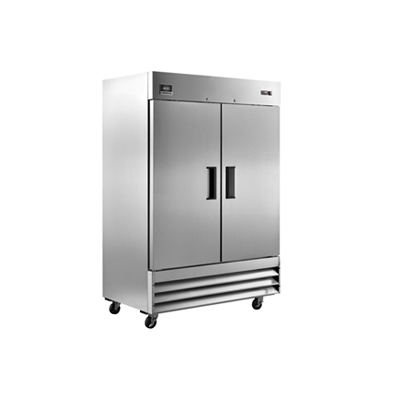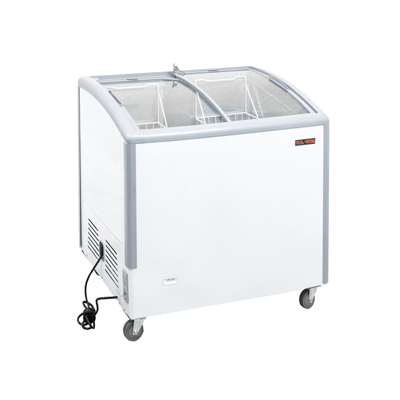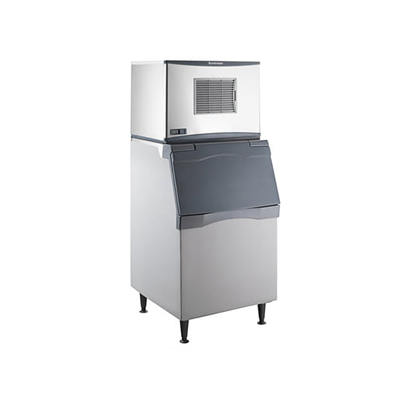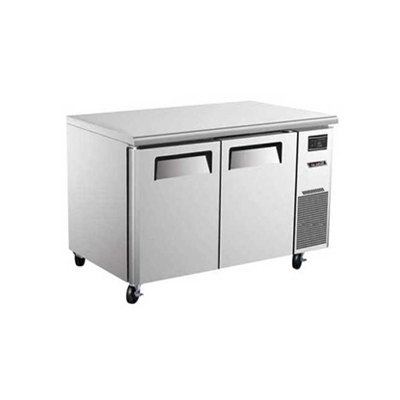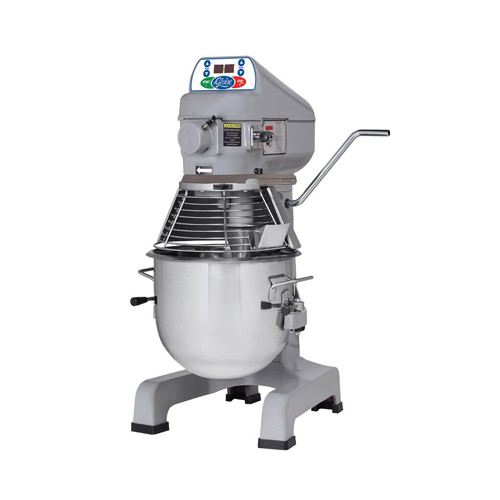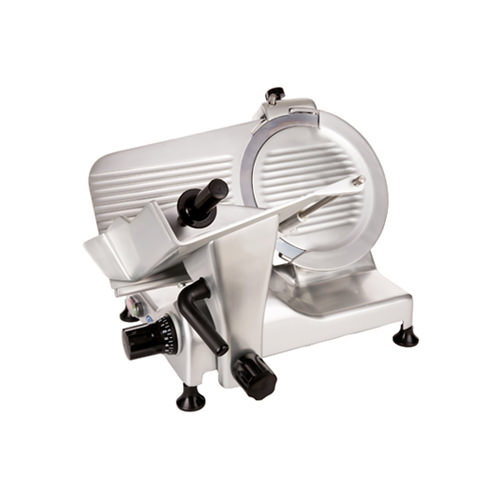Find the Best Industrial Mixer for Your Restaurant Needs
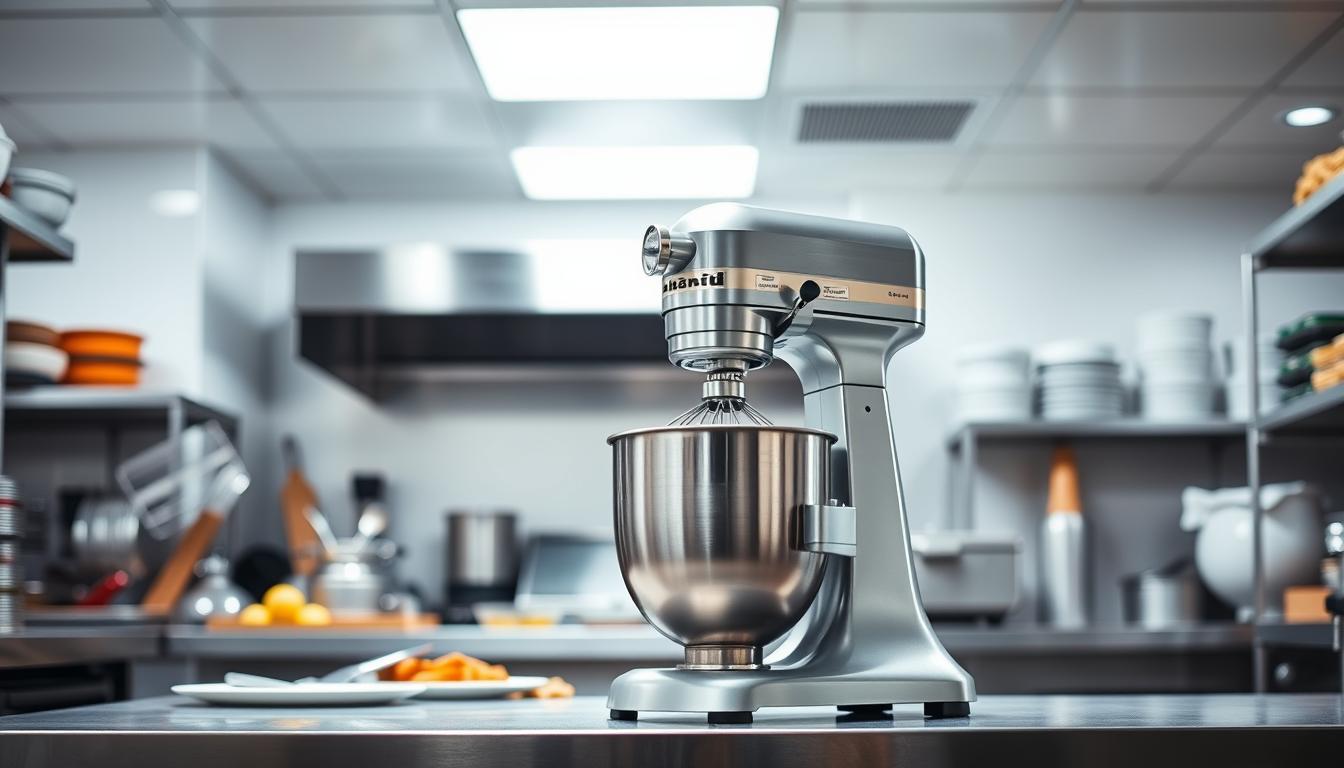
Did you know that over 60% of restaurants in Canada struggle with inefficient kitchen operations due to improper mixer selection? Choosing the right mixer can significantly boost efficiency and product quality. This comprehensive buyer’s guide will walk you through everything you need to know to make an informed decision.
Whether you’re running a small café or a large restaurant, the right mixer can make all the difference. From countertop to floor units, mixers come in various types and sizes to suit different needs. Babak Food Equipment is here to help you find the perfect fit. Call them today at 6045669747 for expert advice.
Our guide combines expert insights and real-world examples to cover various mixer types, features, and features. Whether you’re kneading dough or mixing batter, we’ve got you covered. Learn more about selecting the best mixer for your restaurant needs.
With so many options available, it can be overwhelming to choose the right mixer. But with this guide, you’ll be in expert hands. Let’s get started on finding the perfect mixer for your kitchen!
Introduction to Industrial Mixers
Commercial mixers are the backbone of any busy kitchen, offering the power and versatility needed to handle demanding tasks. These machines are designed to streamline operations, ensuring efficiency and consistency in food preparation.
What is a Commercial Mixer?
A commercial mixer is a robust appliance used in restaurants and bakeries for mixing, kneading, and aerating ingredients. Whether it’s whipping batter or kneading dough, these mixers are built to handle heavy-duty tasks with ease and precision.
The Role of Mixers in Commercial Kitchens
In a fast-paced kitchen, a reliable mixer is indispensable. It handles multiple tasks, from preparing batter to kneading dough, ensuring consistency and saving time. Here are some key roles:
- Handles various mixing tasks efficiently
- Ensures consistent batter and dough quality
- Supports high-volume production needs
- Enhances kitchen efficiency and productivity
For expert advice on selecting the right mixer, contact Babak Food Equipment at 604-566-9747.
Types of Commercial Mixers Explained
Choosing the right mixer for your kitchen can be a game-changer. With so many options available, it’s important to understand the differences between countertop, floor, and handheld mixers to make an informed decision.
Countertop vs. Floor vs. Handheld Options
Countertop mixers are ideal for smaller kitchens with limited space. They are lightweight and easy to move, making them perfect for tasks like whipping small batches of cream or beating eggs. These mixers typically have a capacity of less than 10 quarts, making them suitable for low- to standard-duty use.
Floor mixers, on the other hand, are designed for high-volume production. They are larger and more powerful, with capacities often exceeding 20 quarts. These mixers are ideal for busy restaurants and bakeries that need to handle heavy-duty tasks like kneading large batches of dough. Their robust construction and high horsepower motors make them a reliable choice for demanding environments.
Handheld mixers offer flexibility for smaller tasks. They are lightweight and easy to use, perfect for mixing sauces, dressings, or batters in small quantities. Their portability makes them a great addition to any kitchen, providing convenience without taking up valuable counter space.
In summary, the choice between countertop, floor, and handheld mixers depends on your specific needs. Whether you’re running a small café or a large restaurant, there’s a mixer out there that can help you achieve your culinary goals.
Countertop Mixers: Features and Benefits
Countertop mixers are a perfect solution for kitchens where space is limited but efficiency is key. These compact units are designed to deliver powerful performance without taking up valuable counter space.
Ideal for Limited Space Operations
Countertop mixers are lightweight and easy to move, making them perfect for small kitchens or boutique bakeries. They typically have a capacity of less than 10 quarts, making them ideal for tasks like whipping cream, beating eggs, or kneading small batches of dough.
One of the standout benefits of countertop mixers is their versatility. Many models come with interchangeable attachments, allowing you to customize your mixer to suit various tasks. Whether you’re preparing sauces or mixing batters, these mixers offer ease of use and precision.
| Feature | Benefit | Popular Models |
|---|---|---|
| Compact Design | Maximizes workspace without sacrificing power | Hobart N50, KitchenAid Classic |
| Lightweight Construction | Easy to move and store | Breville BEM800, Cuisinart SM-50 |
| Multiple Speed Settings | Customizable mixing for various ingredients | Bosch Universal Plus, Hamilton Beach 7-Speed |
For more information on selecting the right countertop mixer for your needs, visit Babak Food Equipment. Their expertise can help you find the perfect fit for your kitchen.
Floor Mixers: Power and Capacity
Floor mixers are the backbone of high-volume commercial kitchens, offering unmatched power and durability. Designed for heavy-duty tasks, these mixers are essential for restaurants and bakeries that require consistent performance and reliability.
Handling High-Volume Production
Floor mixers are built to handle large batches with ease. With capacities ranging from 30 to 140 quarts, they are ideal for preparing massive amounts of dough, batter, or other mixtures. The Legacy+ series from Hobart, for instance, offers models with capacities of 30, 40, 60, 80, and 140 quarts, ensuring there’s a size to fit every kitchen’s needs.
These mixers feature robust constructions and powerful motors, making them perfect for demanding environments. The PLUS System, which includes VFDadvantage, maximum capacity overheat protection, and a reinforced planetary shaft, ensures efficient mixing and long-lasting performance. Additionally, the absorption ratio calculator helps determine the right mixer size based on recipe requirements, optimizing production efficiency.

Speed and Duty Cycle Considerations
Speed and duty cycles are crucial for achieving desired results in high-volume production. Floor mixers typically come with multiple speed settings—three or four standard speeds plus an ultra-low stir speed. This versatility allows for precise control over mixing tasks, from gentle folding to intense kneading.
The duty cycle refers to how long the mixer can operate without overheating. Look for mixers with advanced cooling systems and robust motors to handle continuous use. For example, Hobart’s HSL180 spiral mixer features a 0.75hp bowl motor and two-speed spiral arms, while the HSU440 model offers even more power for heavy-duty tasks.
FastStop technology, available on 80-quart and 140-quart models, stops all moving parts in less than three seconds, enhancing safety and control. This feature is particularly useful in fast-paced environments where every second counts.
When selecting a floor mixer, consider how its speed settings and duty cycle align with your production demands. A mixer with adjustable speeds and a reliable duty cycle will ensure consistent results and minimize downtime.
Planetary Mixers: Mixing Techniques and Performance
Planetary mixers are renowned for their precise mixing techniques, making them a cornerstone in both professional kitchens and industrial settings. Their unique planetary action ensures thorough ingredient incorporation, minimizing unmixed pockets for consistent results.
Bowl Lift versus Hand Options
When it comes to planetary mixers, the choice between bowl lift and hand-operated models can significantly impact efficiency. Bowl lift mixers offer enhanced stability, especially with large batches, reducing spillage risks and ensuring even mixing. This makes them ideal for delicate batters where consistency is crucial.
Hand-operated mixers, while more portable, are best suited for smaller tasks. They provide flexibility but may lack the power needed for heavy-duty mixing. For high-volume environments, the bowl lift mechanism is preferred due to its robust performance and reliability.
Key Considerations:
- Bowl Lift: Ideal for large batches and delicate mixtures, offering stability and consistent results.
- Hand-Operated: Suitable for small-scale tasks, providing portability and ease of use.
The choice between these options should align with your specific kitchen needs, ensuring optimal performance and efficiency.
Mixers for Dough: Perfect for Pizza and Artisan Bread
When it comes to crafting perfect pizza dough or artisan bread, the right mixer can elevate your bakery or restaurant to new heights. In Canada, where culinary excellence is prized, choosing a mixer tailored to dough production is essential for achieving that perfect texture and consistency.
Why Dough Mixing Matters
Dough mixing is a critical step in bread and pizza production. A mixer designed specifically for dough ensures even hydration and proper gluten development, which are vital for the final product’s texture and rise. For pizza dough, a spiral mixer is often preferred due to its gentle yet thorough mixing action, which preserves the delicate balance needed for a crispy crust.
| Feature | Benefit | Popular Models |
|---|---|---|
| Spiral Arms | Gentle mixing to preserve dough structure | Hobart Legacy+, Globe Food Equipment Spiral Mixers |
| Breaker Bar | Efficient ingredient blending | Globe Food Equipment, Empire IRIS Spiral Mixer |
| Variable Speeds | Customizable mixing for different dough types | Hobart HSL180, Wolf Gourmet Stand Mixer |
Many Canadian restaurants swear by the Hobart Legacy+ and Globe Food Equipment mixers for their dough needs. These mixers are built to handle the demands of heavy dough, ensuring consistent results every time.
Investing in a specialized dough mixer pays off in the long run. It ensures your pizza crusts are crispy and your artisan breads have the perfect chew. Let your mixer do the hard work so you can focus on creating culinary masterpieces.
Assessing Mixer Speeds and Power
When selecting a mixer for your kitchen, understanding the role of speed and power is essential for optimal performance. The right combination ensures efficient mixing, consistent results, and durability over time.
Motor speed significantly impacts mixing consistency. High-speed mixers are ideal for lighter tasks like whipping cream or beating eggs, while lower speeds are better suited for heavy dough, ensuring proper gluten development without overworking the ingredients. This balance is crucial for achieving the desired texture in baked goods.
Variable speed settings are critical for different recipes. They allow for precise control, from gentle folding to intense kneading. For high-volume production, sufficient power is necessary to handle large batches efficiently without overheating.
Consider your kitchen’s specific needs when choosing a mixer. For instance, a busy Canadian bakery might require a powerful mixer with adjustable speeds to handle both small batches of pastries and large quantities of dough. The Hobart Legacy+ series exemplifies this with its range of capacities and speeds, catering to various production demands.
In summary, evaluating mixer speeds and power is vital for ensuring efficiency and consistency in your kitchen. By matching these elements to your specific needs, you can optimize performance and achieve superior results in food preparation.
Factors to Consider When Choosing an Industrial Mixer
Choosing the right mixer for your kitchen involves more than just picking a model. It’s about matching your needs to the mixer’s capabilities. Here are the key factors to consider:
- Performance and Durability: Look for a mixer that can handle heavy-duty tasks and last long.
- Capacity: Ensure the mixer size fits your batch requirements, from small to large.
- Energy Efficiency: Consider how much power it uses and how it affects your costs.
- Maintenance Needs: A mixer that’s easy to clean and maintain saves time and money.
- Space and Workflow: Make sure it fits well in your kitchen layout and workflow.
Take a comprehensive account of your kitchen’s specific needs. Think about how often you’ll use the mixer and what types of ingredients you’ll mix. For example, if you knead a lot of dough, a spiral mixer might be best. For lighter tasks, a countertop mixer could be perfect.
Don’t forget to think about future needs. Will you need to expand your operations? A versatile mixer that can handle different tasks might be worth the investment. Also, consider the environmental impact and choose a mixer with eco-friendly features if possible.
For expert advice, contact Babak Food Equipment at 604-566-9747. They can help you find the perfect mixer for your kitchen.

Essential Features for Optimal Mixer Performance
When it comes to achieving top-notch results in your kitchen, the right features in your mixer can make a significant difference. A mixer with versatile attachments and compatible accessories can elevate your mixing tasks, ensuring efficiency and consistency.
Attachment Options and Versatility
Having a variety of attachments is crucial for maximizing your mixer’s potential. Whisks, dough hooks, and flat beaters are must-have attachments that can adapt your mixer to different tasks. For instance, a dough hook is perfect for kneading heavy dough, while a whisk excels at incorporating air into batters. These attachments allow you to tailor your mixer to specific recipes, ensuring optimal performance.
Accessory Compatibility in Commercial Settings
Accessory compatibility is another key factor in enhancing your mixer’s functionality. Many commercial mixers come with a power take-off (PTO) hub, enabling the use of specialized accessories like meat grinders or shredders. This feature not only expands the mixer’s capabilities but also streamlines your kitchen workflow. For example, a spiral mixer with a PTO hub can handle dough mixing and other tasks with ease, making it a valuable asset in busy Canadian restaurants.
- Attachments like whisks and dough hooks allow for task-specific mixing.
- Accessory compatibility enhances functionality and workflow efficiency.
- Investing in versatile equipment offers long-term value and adaptability.
- Reviewing available accessories ensures you find the perfect fit for your needs.
By choosing a mixer with a range of attachments and ensuring accessory compatibility, you can future-proof your investment and maintain high performance in your kitchen. For more information on selecting the right mixer, visit Nella’s guide for expert insights.
Evaluating Price and Investment Value
When investing in a mixer, it’s crucial to evaluate the price in relation to performance and long-term value. While initial costs may seem high, they often reflect the mixer’s durability and capabilities. Consider how the mixer’s price aligns with your kitchen’s production needs and growth plans.
Here’s a breakdown of key considerations:
- Price Ranges: Mixers vary widely in cost, from a few hundred to several thousand dollars, depending on size and features.
- Higher Initial Cost: Premium mixers may offer better build quality and longer lifespan, reducing long-term maintenance costs.
- Factors Justifying Investment: Look for features like energy efficiency, low maintenance needs, and durability, which can save money over time.
- Cost-Benefit Analysis: Assess how the mixer’s capabilities match your production demands to ensure you’re getting value for your money.
- Total Cost of Ownership: Consider not just the purchase price but also ongoing expenses like maintenance and energy use.
- ROI Potential: A mixer that enhances efficiency and reduces waste can offer significant returns on investment.
For Canadian restaurants, a thorough cost-benefit analysis is essential. By evaluating both initial and long-term costs, you can make an informed decision that supports your kitchen’s success and scalability.

Understanding Duty Cycles and Mixing Efficiency
When it comes to optimizing your kitchen’s performance, understanding duty cycles and their impact on mixing efficiency is crucial. Duty cycles refer to the amount of time a mixer can operate without overheating, making them a vital factor in high-demand environments.
Optimizing Performance in Busy Kitchens
Duty cycles matter because they help prevent overuse and equipment failures. A mixer with a higher duty cycle can handle longer periods of operation, which is essential for busy Canadian restaurants. For instance, Hobart’s Legacy+ mixers are designed with advanced cooling systems, allowing them to handle continuous use without overheating.
Motor speed and duty cycle are closely linked. Higher speeds are ideal for lighter tasks, while lower speeds are better for heavy dough. This balance ensures proper gluten development without overworking ingredients. Hobart’s Legacy+ series offers multiple speed settings, including an ultra-low stir speed, giving you precise control over your mixing tasks.
| Consideration | Details | Example |
|---|---|---|
| Duty Cycle | Time mixer can operate without overheating | Hobart Legacy+ mixers |
| Motor Speed | Adjustable settings for task-specific mixing | Ultra-low to high speeds |
| Efficiency | Matches production demands for consistent results | Variable speed settings |
Selecting a mixer that fits your production volume ensures efficiency and longevity. By understanding duty cycles and speed settings, you can optimize your mixer’s performance, leading to consistent results and reduced downtime in your kitchen.
Real-World Applications in Canadian Restaurants
Canadian restaurants have long relied on high-performance mixers to streamline their kitchen operations and deliver consistent food quality. From bustling Toronto eateries to cozy Vancouver bistros, these machines play a vital role in preparing everything from artisan breads to delicate sauces.
Consider the case of a popular Montreal bakery that switched to a spiral mixer for their dough preparation. This change reduced their mixing time by 30% and improved dough consistency, leading to better-tasting bread. Similarly, a Toronto restaurant adopted a high-shear mixer to handle large batches of emulsion sauces, ensuring uniform flavor and texture.
- A small café in Calgary uses a countertop mixer to whip cream and prepare batters efficiently, saving both time and space.
- A large Vancouver restaurant relies on a floor mixer for high-volume dough kneading, producing hundreds of loaves daily with minimal effort.
These examples highlight how mixers contribute to efficiency and food quality in Canadian kitchens. By choosing the right equipment, restaurants can enhance their operations and reduce costs, ensuring long-term success in a competitive market.

Maintenance Tips for Longevity and Efficiency
Proper upkeep is essential to keep your mixer running smoothly and extending its lifespan. Regular maintenance not only prevents unexpected downtime but also ensures consistent performance in your kitchen.
Routine Cleaning Practices
Start by cleaning your mixer after every use. Wipe down the bowl, beaters, and exterior with a damp cloth to remove any food residue. For tougher messes, mix equal parts water and white vinegar in the bowl and run a short cycle. Avoid using high-pressure hoses or harsh chemicals, as they can damage the finish or harm electrical components.
- Sanitize all parts with a food-safe cleaner after cleaning.
- Regularly lubricate moving parts with food-grade lubricant.
- Store detachable parts in a dry place to prevent water buildup.
Regular Inspections and Repairs
Schedule inspections every 3-6 months. Check for worn-out parts like seals or belts and replace them promptly. Lubricate gears and hinges to maintain smooth operation. If you notice unusual vibrations or noises, address them immediately to prevent major repairs.
By following these tips, you’ll protect your investment and ensure your mixer continues to perform at its best, supporting your kitchen’s success for years to come.
Leveraging Babak Food Equipment’s Expertise
Choosing the right mixer for your kitchen can be a challenging task, especially with so many options available. That’s where Babak Food Equipment comes in—your trusted partner in selecting the perfect mixer for your restaurant needs. With years of experience in the industry, their team of experts understands the unique challenges Canadian restaurants face and is dedicated to providing personalized solutions tailored to your specific requirements.
Contact Us: 604-566-9747 for Personalized Advice
Whether you’re unsure about the right mixer size or need guidance on features that best suit your operations, Babak Food Equipment is here to help. Their knowledgeable staff is just a phone call away, ready to offer expert advice and ensure you find the mixer that perfectly fits your kitchen. Visit their website to explore their range of high-quality mixers and discover how they can enhance your kitchen’s efficiency.
Common concerns, such as balancing performance with budget or determining the right capacity for your operations, are easily addressed with Babak Food Equipment’s tailored approach. Their commitment to reliability and industry expertise ensures that you receive not just a product, but a long-term solution that supports your kitchen’s success.

Comparing Leading Mixer Brands and Models
When it comes to selecting the right mixer for your kitchen, understanding the differences between leading brands can make all the difference. Two standout manufacturers, Hobart and Globe Food Equipment, offer exceptional quality and performance, each with unique features tailored to specific needs.
Insights from Hobart’s Product Range
Hobart mixers are renowned for their durability and versatility. The Legacy+ series, for instance, offers a range of capacities from 30 to 140 quarts, making them ideal for both small and large-scale operations. One of their key features is the power lift mechanism, which provides smooth and efficient bowl handling, reducing strain and improving workflow.
A notable advantage of Hobart mixers is their advanced cooling systems, which prevent overheating during prolonged use. This makes them particularly suitable for high-volume production environments. Additionally, Hobart’s models often come with multiple speed settings, including an ultra-low stir speed, giving users precise control over their mixing tasks.
Overview of Globe Food Equipment Mixers
Globe Food Equipment stands out for its robust construction and user-friendly designs. Their mixers are known for their consistent performance and long lifespan, making them a favorite among professional chefs. The manual lift feature in many Globe models offers reliability and simplicity, appealing to those who prefer straightforward operation.
Globe mixers also excel in energy efficiency, with motors designed to handle heavy-duty tasks without excessive power consumption. Their models are often praised for their quiet operation and minimal vibration, creating a more pleasant working environment. This balance of power and efficiency makes Globe mixers a top choice for many Canadian restaurants.
- Hobart: Ideal for high-volume production with advanced cooling and variable speeds.
- Globe Food Equipment: Durable, energy-efficient, and user-friendly for consistent results.
In summary, Hobart and Globe Food Equipment each bring unique strengths to the table. Hobart’s power lift and cooling systems are perfect for demanding environments, while Globe’s manual lift and energy efficiency cater to those seeking reliability and simplicity. By understanding these differences, you can choose the mixer that best aligns with your kitchen’s specific needs and workflow.
Conclusion
Now that you’ve explored the essential considerations for selecting the perfect mixer, it’s time to take the next step. Remember, the right mixer is a vital investment that can elevate your kitchen’s efficiency and the quality of your dishes. By understanding the types, features, and performance metrics, you’re better equipped to make an informed decision that aligns with your restaurant’s needs.
Don’t hesitate to leverage the expertise of Babak Food Equipment. Their team is ready to guide you through the process, ensuring you find a mixer that perfectly fits your operations. Whether you need advice on capacity, speed settings, or maintenance, they’re just a call away at 604-566-9747.
In conclusion, investing in the right mixer is more than just a purchase—it’s a commitment to your kitchen’s success. With the insights from this guide and the support of experts, you’re ready to make a confident, informed choice. Take the first step today and transform your kitchen with the perfect mixer for years of reliable performance.


